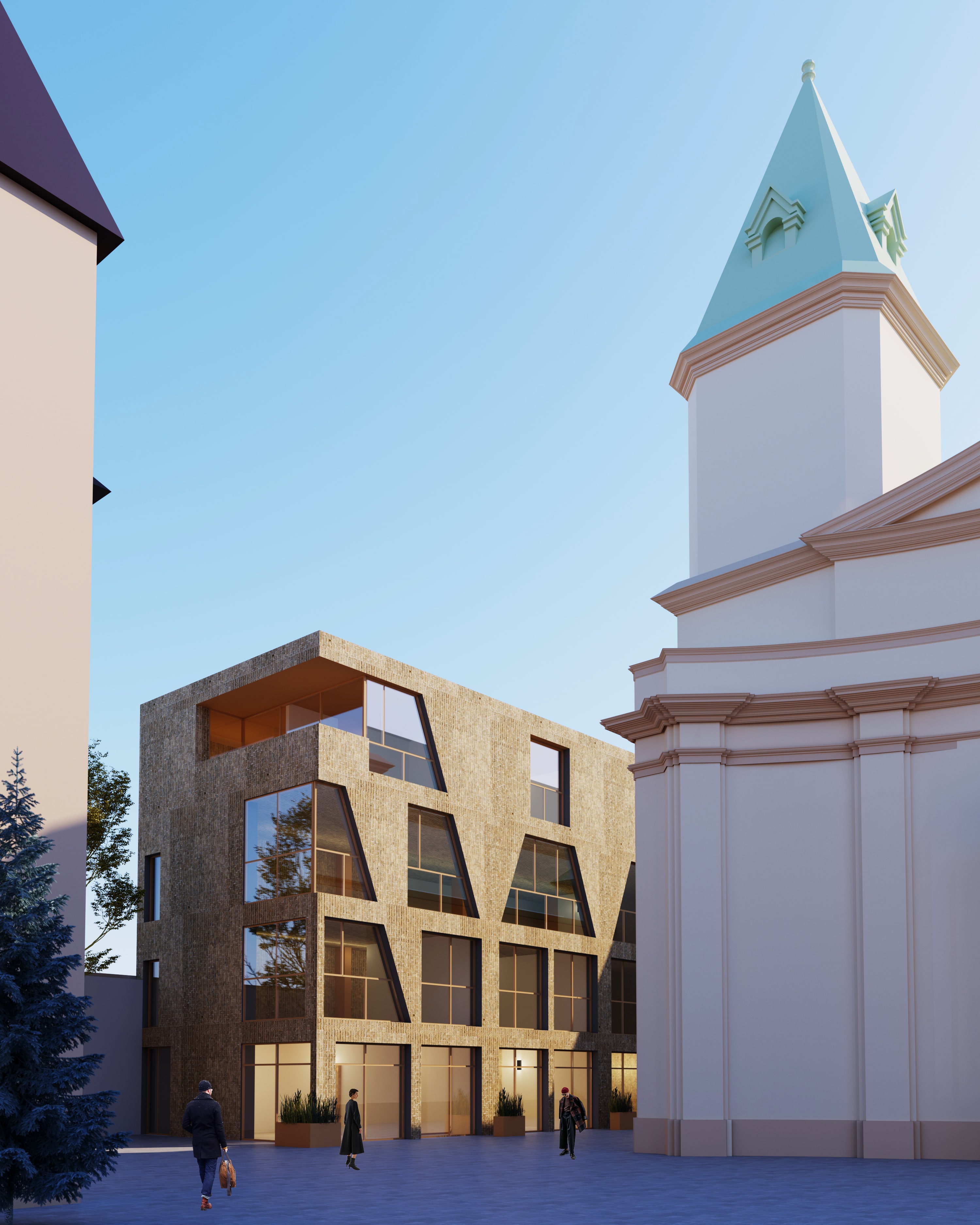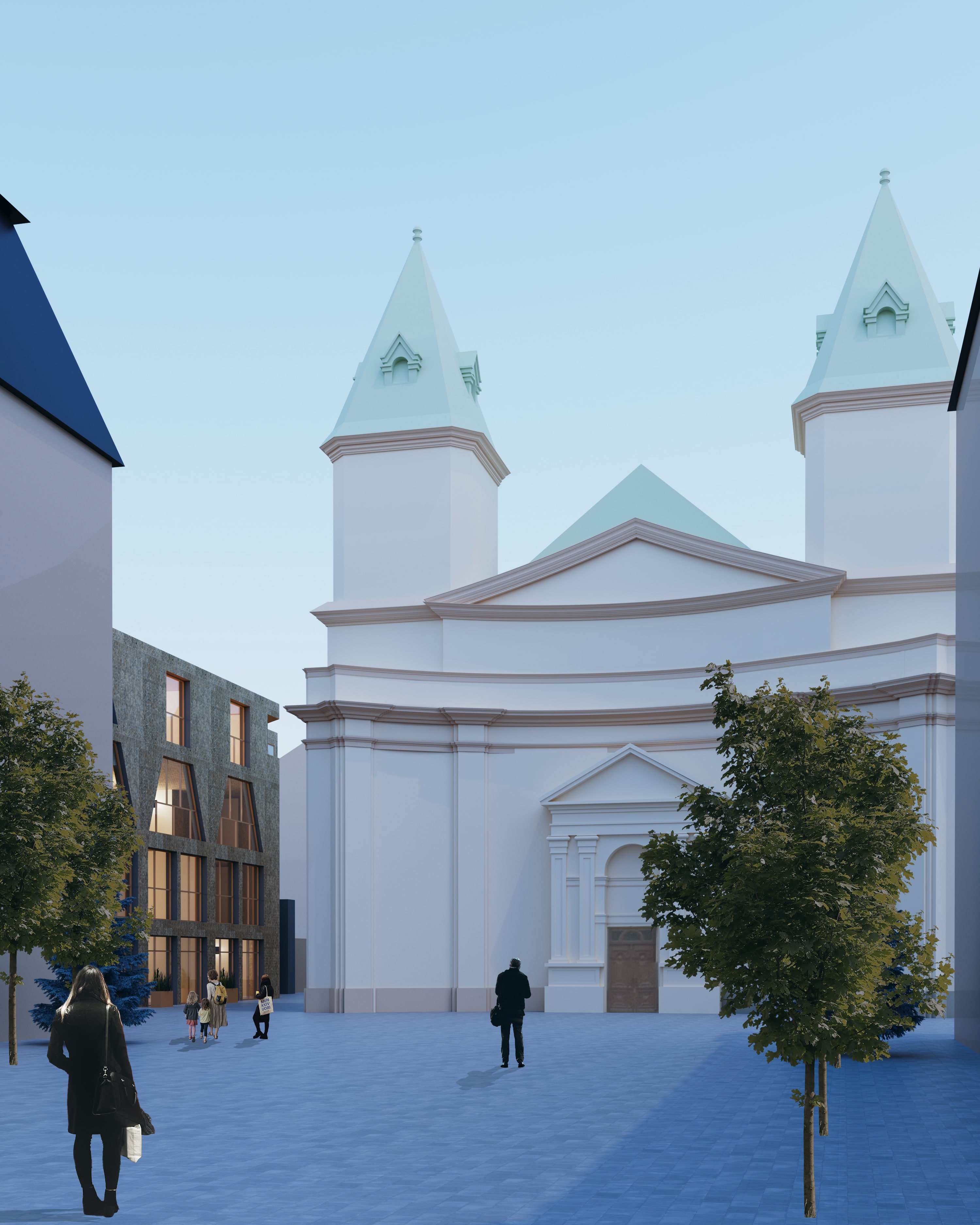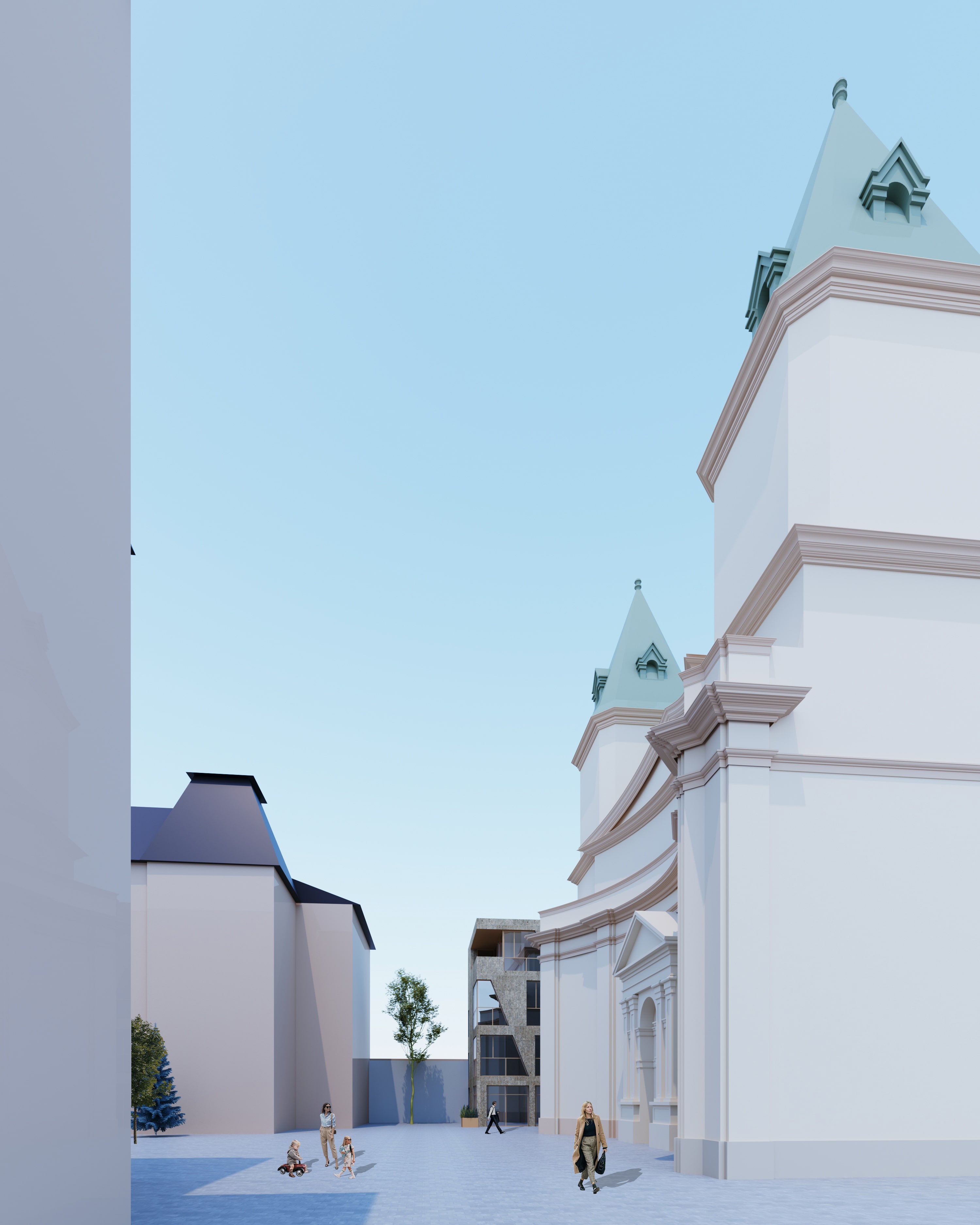Spiritual and Social Center
on Zelena Street
Year: 2025
Categories: Renovation, Sacral
Location: Lviv, Ukraine


The garage–workshop building is being reconstructed for the needs of the Spiritual and Social Center of the Evangelical Christian Baptist Religious Community, namely to accommodate studios for group activities and rooms for social work with youth.
A monument of architecture of local significance, the Church of St. Ursula (protection No. 4482/1 Lv), is located on the site.
The Dominican Monastery with the Church of St. Ursula was founded in 1685 and built amidst the green gardens of the Galician suburb along the Pokutskyi Road. According to a record dated April 26, 1785, the belfry—as well as, evidently, the monastery itself—were wooden, and therefore have not survived. In November 1785, the church was transferred to the Evangelical community.
The original monastic complex with its garden, orchard, and magnificent Baroque courtyard has been completely lost. The curved main façade of the church, adorned with two-story pilasters, remains a characteristic feature of classical Baroque architecture. In 1878, a rectilinear Classicist portal with a triangular pediment was inserted into the façade, and eclectic towers were added above it. In the 1940s, the church building was repurposed as a warehouse and subsequently fell into disrepair.



Between 1992 and 2003, restoration of the Church of St. Ursula was carried out according to a design by the private architectural firm “Symmetry Architectural Workshop” (architect Mykola Rybenchuk). The project involved adapting the building for use as a house of prayer, with the addition of a Sunday school and necessary service facilities on the northern façade of the church.
The restoration reinstated the Baroque spatial composition while considering later historical layers. Side aisles were fitted with galleries, the choir lofts were enlarged, and new roof structures were built over the main volume and towers. The Sunday school was added to the northern façade of the Church of St. Ursula. The balanced and well-proportioned volume of the school, corresponding in scale to the Evangelical school and the pastor’s house, embraces the apse of the church.
The tall gables of the façades echo the gable roof over the apse and reflect the design archetype of traditional fachwerk (half-timbered) construction, characteristic of German bourgeois residential architecture. This approach is continued in the reconstruction of the garage–workshop building.
The reconstructed building is designed with a flat roof; the absence of gables and a high roof is compensated by the graphic treatment, form, and composition of the windows.
s




